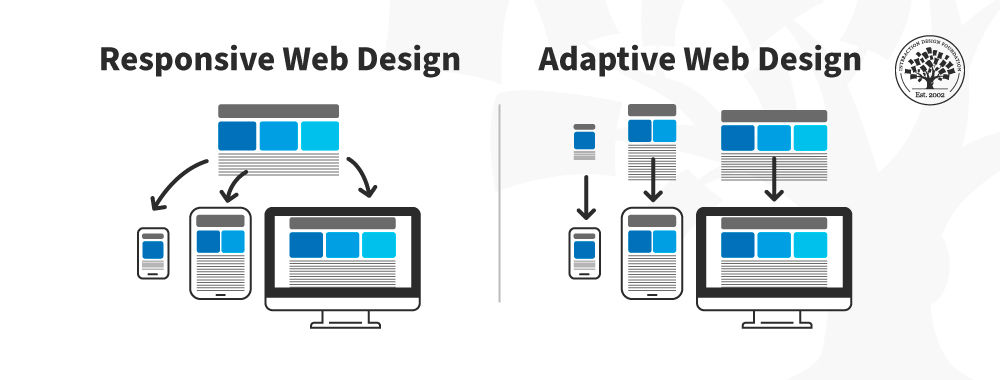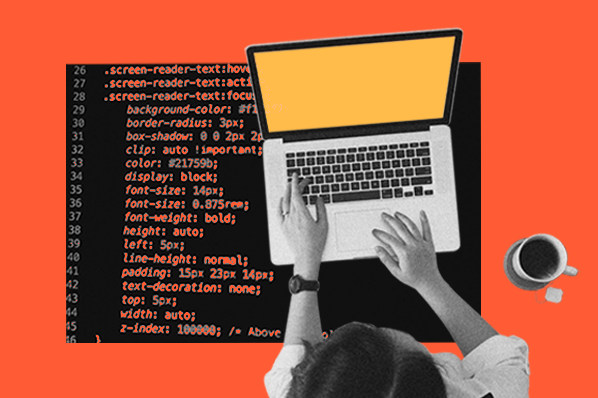Key Considerations to Bear In Mind When Developing a Modern Website Design That Aligns With Existing Patterns
In the ever-evolving landscape of internet design, it is crucial to think about several crucial elements that not just reflect existing patterns but additionally boost customer engagement. A responsive style is vital, guaranteeing that users experience smooth functionality across different tools. Focusing on user experience via intuitive navigation and aesthetic charm can not be forgotten. web design.
Responsive Layout Concepts

The core of responsive design depends on its capability to change format and web content based on the user's screen dimension and orientation. By utilizing family member devices like percents instead of repaired systems like pixels, designers can produce scalable formats that keep aesthetic honesty. In addition, using media inquiries permits for the application of different designs relying on the features of the gadget, helping with customized experiences that improve usability.
Additionally, responsive style is not merely a technical consideration; it is essential in suiting the raising use of mobile phones for web surfing. As customer assumptions evolve, making sure availability and performance across all systems ends up being vital for keeping engagement and contentment. Thus, embracing responsive layout principles is crucial for contemporary web growth, promoting inclusivity and future-proofing digital material.

Emphasis on Customer Experience
Customer experience (UX) has emerged as a central focus in modern-day web design, matching the concepts of receptive layout by focusing on exactly how users connect with internet sites. A properly designed UX can dramatically impact customer retention, involvement, and complete satisfaction, underscoring the demand for designers to develop pleasurable and instinctive experiences.
Crucial element of efficient UX style include usability, capability, and aesthetics. web design. Websites need to be simple to browse, making certain individuals can locate the information they look for without complication. Concise and clear navigation menus, constant layout, and sensible content organization are vital in achieving this objective. In addition, capability plays a crucial duty; interactive components have to function effortlessly across all web browsers and gadgets.
Aesthetic considerations can not be ignored, as an aesthetically attractive design can boost individual understanding and encourage exploration. Color design, typography, and images ought to be attentively incorporated to develop a natural and appealing interface.
In addition, integrating individual responses into the layout process is necessary. Conducting use testing and celebration insights from real users can give beneficial details to improve the style and address pain factors. Inevitably, a strong emphasis on customer experience will assist create web sites that resonate with site visitors, cultivating loyalty and driving conversions.
Importance of Accessibility
Availability is a basic element of modern web style, making sure that all individuals, no matter of their capabilities or specials needs, can connect and browse with digital content properly. As the internet ends up being significantly essential to every day life, it is necessary that sites are comprehensive, dealing with a diverse audience that includes people with visual, auditory, cognitive, and electric motor problems.
Implementing availability attributes not only sticks to lawful needs, such as the Americans with Disabilities Act (ADA) and the Internet Web Content Access Standards (WCAG), however likewise enhances customer experience for every person. Easily accessible layouts commonly result in far better navigating, faster loading times, and boosted search engine optimization, benefiting all customers.
Additionally, fostering a comprehensive electronic atmosphere mirrors favorably on a brand name's credibility. Business that focus on accessibility demonstrate social obligation and a commitment to equity, which can enhance consumer loyalty and use this link expand their market reach.
Including features such as alt message for photos, keyboard navigation, and adjustable text dimensions are functional actions in achieving this goal. Inevitably, accessibility needs to be viewed not as an afterthought but as a core principle in the web style process, shaping a digital landscape that welcomes all customers.
Present Aesthetic Fads
Accepting existing visual trends is critical for producing engaging and aesthetically attractive web sites that catch user attention. In today's electronic landscape, minimalism continues to control, highlighting clean lines, adequate white space, and simple navigation. This approach not only enhances readability but additionally permits essential content to shine, lining up with customer expectations for simplicity and clearness.
Moreover, the use of strong typography is increasingly preferred, boosting and giving a distinctive voice brand identity. Big, attention-grabbing fonts can develop aesthetic power structure, guiding users with the content efficiently. Additionally, dynamic shade palettes are rebounding, allowing developers to stimulate emotions and produce memorable experiences.
One more pattern is the unification of organic forms and asymmetrical designs, which can add a component of surprise and imagination, setting a site apart from even more standard layouts. Moreover, the integration of immersive visuals, such as top notch images and video clips, can engage individuals and communicate messages a lot more powerfully.
As these visual patterns develop, it is essential for internet designers to stay educated and adapt their strategies, ensuring their creations stay pertinent and reverberate with modern target markets.
Maximizing for Efficiency
While visual considerations play a considerable role in bring in users, optimizing for performance is similarly important to guarantee a seamless browsing experience. A properly designed website needs to load quickly and react promptly to customer interactions, as delays can bring about aggravation and increased click to read bounce prices.
To achieve ideal performance, designers ought to focus on reducing data dimensions by pressing images and making use of reliable coding methods. Applying careless loading strategies can likewise improve rate by postponing the loading of non-essential sources Get More Information until they are needed. Furthermore, leveraging Material Distribution Networks (CDNs) can distribute fixed assets more detailed to customers, lowering latency.
Additionally, it is necessary to utilize modern-day internet modern technologies such as HTML5 and CSS3, which not just boost performance however likewise improve compatibility throughout different tools and web browsers. On a regular basis monitoring web site speed using devices like Google PageSpeed Insights can offer important understandings into areas for improvement.
Final Thought
In verdict, modern-day web style demands a complex approach that includes receptive design principles, a focus on user experience, and stringent adherence to accessibility requirements. Jointly, these considerations add to the creation of a cohesive and impactful on-line visibility that fulfills the varied demands of modern individuals.
In the ever-evolving landscape of web style, it is essential to consider numerous pivotal factors that not just mirror existing trends however likewise improve individual interaction. A responsive style is paramount, guaranteeing that customers experience smooth functionality throughout different gadgets.The core of responsive layout exists in its capacity to readjust format and content based on the individual's screen size and orientation.Additionally, including user feedback into the style procedure is vital.In conclusion, contemporary internet layout necessitates a diverse strategy that encompasses responsive style concepts, an emphasis on customer experience, and stringent adherence to access standards.